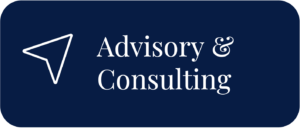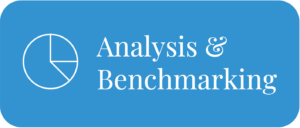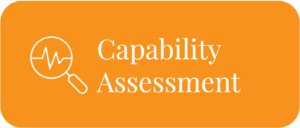One of the most significant challenges for companies is identifying modern slavery risks in their supply chain. Procurement spend analytics can help by providing companies with comprehensive supply chain data that can be used to identify and address modern slavery risks.
Modern Slavery Statement’s Looming Deadline… and then what?
The deadline for submitting the Modern Slavery Statement is 31st March 2023. Australian companies need to act quickly to ensure they can comply with the legislation and submit a comprehensive and accurate Modern Slavery Statement.
However, submitting a Modern Slavery Statement by the deadline is only the first step. The Modern Slavery Act requires ongoing monitoring and reporting of modern slavery risks within the supply chain. This means that Australian companies must not only identify the risks but also take steps to address them.
One way to do this is by continuously monitoring the supply chain for any changes or new risks. This can be done using procurement spend analytics tools, which provide ongoing visibility into supplier performance and help identify any red flags. These tools can also help identify areas of the supply chain where there may be higher risks of modern slavery and provide the necessary data to take appropriate action.
For example, data on supplier compliance with modern slavery laws and regulations can help identify potential risks and areas that require improvement. Or data on the number of suppliers trained on modern slavery risks and the number of identified and addressed can help demonstrate a company’s commitment to addressing modern slavery risks.
Some Australian States have stricter thresholds on Modern Slavery requirements
While the Commonwealth Modern Slavery Act 2018 sets the threshold for reporting at $100 million in total revenue, there is separate legislation in New South Wales that sets the threshold at $50 million in turnover. The NSW Modern Slavery Act 2018 covers businesses operating in NSW with an annual turnover of $50 million or more and requires them to produce a Modern Slavery Statement outlining their efforts to address modern slavery in their supply chains.
it’s important to note that the NSW legislation only applies to businesses that are either based in or operating in NSW, whereas the Commonwealth legislation applies to companies that are based in Australia, regardless of which state they are operating in.
It’s worth noting that other Australian states and territories are currently considering or developing their own legislation to combat modern slavery, so it’s important for businesses to stay up to date on the specific requirements in each jurisdiction where they operate.
How does Spend Analytics help you meet Modern Slavery procurement requirements?
Procurement spend analytics refers to collecting and analyzing data about a company’s spending. This data can come from various sources, including purchase orders, invoices, and contracts. Data is then categorised.
Data classification leads to insights, which gives you greater visibility.
As an example, The United Nations Standard Products and Services Code (UNSPSC) is a global standard for classifying products and services. It provides a hierarchical framework for organising products and services into categories and subcategories, which helps to standardise the way products and services are classified across different organizations and industries.
Using UNSPSC classifications can help procurement professionals keep track of modern slavery requirements in their spend data by providing a standardised way of classifying and organising products and services based on their potential risks for modern slavery. For example, UNSPSC provides a specific category for “Human trafficking and forced labor awareness training” (86101803), which could be used to identify suppliers who have provided such training to their employees.
By using UNSPSC classifications to track spend data, procurement professionals can more easily identify suppliers who may be at risk for modern slavery and take steps to reduce that risk. This can include conducting more thorough due diligence on those suppliers, working with them to develop and implement responsible sourcing practices, or potentially even terminating the relationship if the risk cannot be sufficiently mitigated.
Category profiling, Country profiling and Supplier Profiling
By collecting and analysing data about suppliers, procurement professionals can identify those located in countries or industries at high risk for modern slavery. They can also identify suppliers that have been implicated in modern slavery incidents in the past.
Certain products are more likely to involve modern slavery than others. By understanding which products are at risk and where they come from, procurement professionals can take steps to address the risks present in their supply chain.
Here are a couple of examples of products that are at risk of modern slavery and their origin country:
ATTENTION: IT Procurement
Laptops, Computers, and Mobile Phones
China is one of the world’s largest exporters of electronic goods, including laptops, computers, and mobile phones. However, the electronics industry is known to have a high risk of modern slavery, especially in the manufacturing of electronic components.
ATTENTION: Indirect Category Managers
Apparel and Clothing Accessories
The apparel industry is another industry that is known to have a high risk of modern slavery. Many of the world’s largest clothing manufacturers source their products from countries where modern slavery is known to be a problem.
Data Visualisation
By presenting data in a visual format, procurement professionals can quickly and easily identify patterns and trends that may be indicative of modern slavery risks. For example, a heat map showing spending by country of origin can quickly highlight countries that are at high risk for modern slavery.
Risk Lenses for Modern Slavery
Risk lenses are tools that enable procurement professionals to sift through supplier company profiles, country of origin, and product category to identify modern slavery risks. They help to view risks across the supply chain and provide a more complete picture of the risks present within a company’s supply chain.
Here are some examples:
- Company Risk Lens: This lens looks at supplier company profiles to identify potential risks related to their business practices, such as labour practices, health and safety, and environmental impact. By examining a supplier’s profile, procurement professionals can get a better understanding of the supplier’s business practices and determine whether there are any risks that need to be addressed.
- Country of Origin Risk Lens: This lens examines the country of origin of a supplier’s products to identify potential risks related to that country’s business practices. For example, certain countries may be known for using forced labour or having weak labour laws. By examining the country of origin, procurement professionals can identify potential risks and take steps to address them.
- Product Category Risk Lens: This lens looks at the product category of a supplier’s products to identify potential risks related to that category. For example, certain product categories, such as electronics or textiles, may be more likely to involve modern slavery. By examining the product category, procurement professionals can identify potential risks and take steps to address them.
Using risk lenses is an effective way to identify modern slavery risks in a company’s supply chain. By examining supplier company profiles, country of origin, and product category, procurement professionals can get a more complete picture of the risks present in their supply chain and take action to mitigate them.
In Data We Trust
Using Data for Collaboration and Change
Procurement spend analytics can facilitate collaboration between different departments and stakeholders within your organisations.
If a company’s procurement analytics reveal the risk of modern slavery in a particular procurement category, it may need to revaluate its procurement category strategy to address the issue. You will need data to back this up.
For example, if a company finds that a significant amount of its apparel and clothing accessories are sourced from countries with high modern slavery risks, it may need to consider sourcing these products from alternative suppliers or countries that have a lower risk of modern slavery. This could involve conducting a detailed analysis of the supply chain, identifying areas of high risk and collaborating with suppliers to mitigate those risks.
Another approach may be to increase the company’s investment in supplier training and development programs, designed to promote better labor practices and reduce the risk of modern slavery. This could involve engaging with suppliers to develop ethical and sustainable supply chain practices, implementing supplier codes of conduct, and monitoring supplier compliance.
Using Data to Help you Engage with Risky Suppliers
After identifying potential risks, Australian companies need to engage with their suppliers to reduce the risk of modern slavery in the supply chain. This includes developing policies and procedures that promote ethical business practices and working with suppliers to ensure they are complying with these policies. “This might be easier said than done”.
By providing them with specific details about the risks and how they can be mitigated, you can help them take action to ensure that modern slavery is not taking place in their operations.
Additionally, data can be used to track supplier performance and identify areas where they may need to improve. This can include monitoring compliance with modern slavery regulations AND monitoring supplier actions to address identified risks.
Engaging with suppliers on modern slavery is important not only for legal compliance but also for ethical reasons. By working together to address modern slavery risks, you can help to create a more responsible and sustainable supply chain.
Procurement Needs the Tools & Data to Provide the Ethical Leadership Required of Us
The Modern Slavery Act has placed a moral obligation on all of us to be accountable for our supply chains and take action to eliminate modern slavery risks.
We are essential in driving the fight against modern slavery. With the right use of procurement spend analytics and other data-driven approaches we can tackle this together.
This will require a long-term commitment to supplier engagement, monitoring and reporting, as well as investment in technology and data analytics to improve visibility and control over the supply chain.








